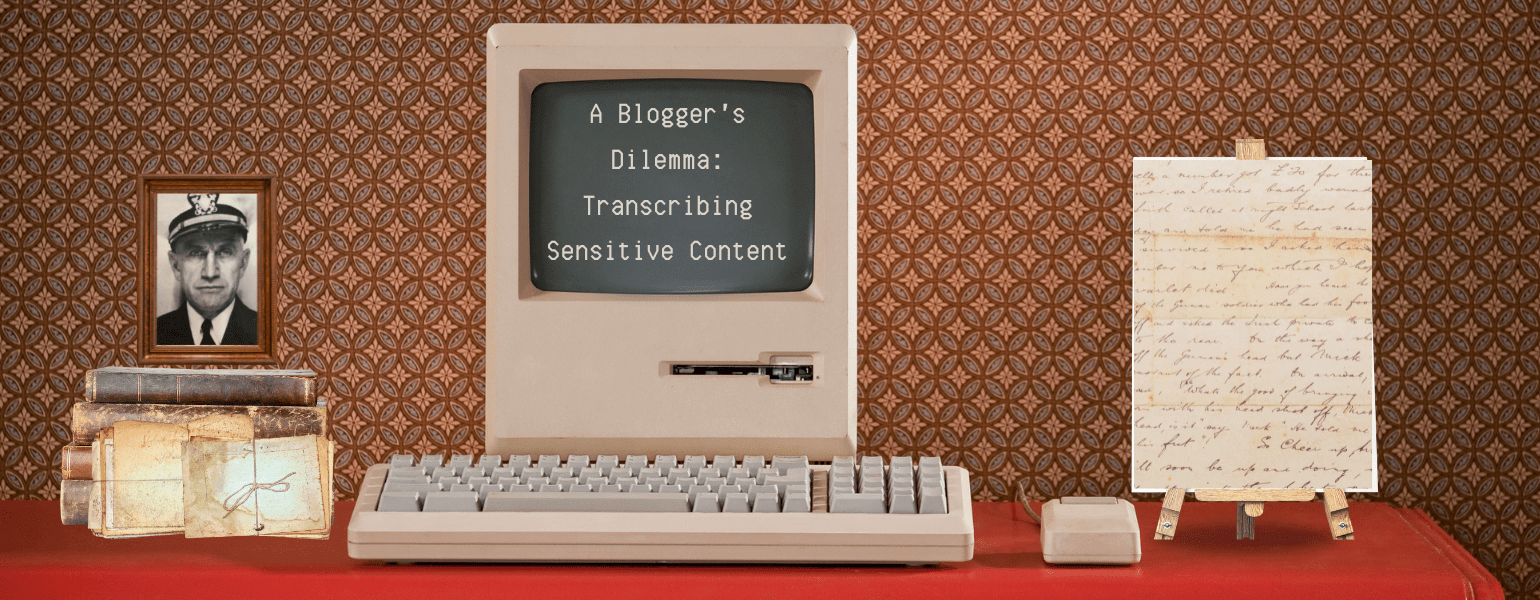
A Blogger’s Dilemma: Transcribing Sensitive Content
Navigating Family History: Balancing Truth and Sensitivity
When I embarked on the journey of sharing my grandparents' letters from the time of the Pearl Harbor attack, I was filled with excitement. What a fantastic way to bring our family's rich history to life! My mom brought me the letters on Thanksgiving 2018, and by December, I was ready. I surrounded myself with old photos, my grandfather’s journals, and his memoir titled, "The Life Story of a Lucky Tennessee Sailor Who Lived to Retire." These, combined with some historical research, would make the letters interesting even to those outside our family.
However, as I transcribed excerpts from my grandfather’s life story to provide context, I encountered a dilemma. His writings, typical of the 1940s, included ethnic slurs. I was mortified. I would never use such language, yet here I was, faced with the decision to censor or not censor these words in my transcription.
To Censor or Not to Censor: Transcribing Sensitive Content
Censoring these words felt like erasing a part of history, pretending these prejudices never existed. Our society has evolved significantly since World War II, and hiding these words seemed akin to modern-day book burning. However, I also didn’t want to hurt anyone with these offensive terms. This was indeed a sticky wicket.
I turned to a good friend for advice, and she suggested using a disclaimer. After some research, I crafted a "Trigger Warning" to accompany the excerpts. This approach acknowledged the offensive language while providing context and historical perspective.
This entry may depict some ethnic and racial prejudices that were once commonplace in American society. Such depictions were wrong then and are wrong today. These transcriptions are being presented as they were originally created, because to do otherwise would be the same as claiming these prejudices never existed.
The Power of a Trigger Warning: Safeguarding Readers' Emotions
During my research, I discovered that the term "Trigger Warning" is used to alert readers about potentially distressing content. This opened a new debate—should I or shouldn’t I use it? There were compelling arguments on both sides. Then, I came across an analogy that resonated with me. As someone with many food and environmental allergies, I’ve often been told that my allergies are "all in my head" or that "exposure will cure you." This analogy helped me understand the importance of giving readers a heads-up about potentially harmful content.
Ultimately, I decided to use the Trigger Warning. This allowed me to preserve the historical integrity of my grandfather’s writings while being considerate of my readers' feelings.
Being triggered is like having an allergic reaction.
A good description of an allergic reaction (speaking as someone who has a food sensitivity) is an involuntary reaction to a substance which can vary from severe discomfort to serious debilitation and endangerment. Change ‘a substance’ to 'content’ and that’s pretty much a description of being triggered. The reaction is psychological rather than physical (although it can, of course, have physical symptoms), but it is just as serious and just as involuntary.
This is why trigger warnings are needed. Do you tell someone with a food allergy to 'just deal’ with an exposure to the allergen? Do you say they’re overreacting when they want food to be labeled so they can avoid what they’re allergic to? Do you say that they should just avoid all public food if they’re going to complain about being allergic to some of it?
No. You label food and put on warnings so they can see that there is an ingredient in it that they are allergic to. It is still their responsibility to avoid that content, but they need to know it’s there in order to do that, and they need to know it before they react to it.
And for the people who say you just need to face up to your problem via exposure? Yes, it’s true that gradual exposure in a safe environment is one way to treat phobias and some times of PTSD. However, that is something that should be addressed with a qualified professional.
Some allergies can be treated with gradual exposure too, by a series of shots that let the person’s body know that the allergen isn’t actually a threat. Animal allergies are a type that can sometimes be treated this way. That doesn’t mean it’s okay to drop a cat in the lap of someone who is allergic to them and say 'exposure will cure you!’“ Especially when you don’t know if they’ve even started that series of shots, much less finished it.
Yes, it is an individual’s responsibility to avoid triggering content. However, just as an allergic person needs a label so that they can effectively avoid their allergens, PTSD/phobia/anxiety sufferers need a warning so that they can avoid their triggers. End of story.
Making Your Own Decision: Respecting the Past and Present
If you’re facing a similar dilemma with your blog or historical project, remember that it's your decision to make. Reflect on your values and the impact you want to have. For me, using a Trigger Warning was the right choice for "Pauline's Letters," a series now linked on my blog’s sidebar. This is my blog, my opinion, and my meandering scribble.
Sharing family history is a rewarding yet complex endeavor. As we navigate these challenges, we not only preserve our past but also engage in meaningful discussions about our journey toward a more inclusive future.

